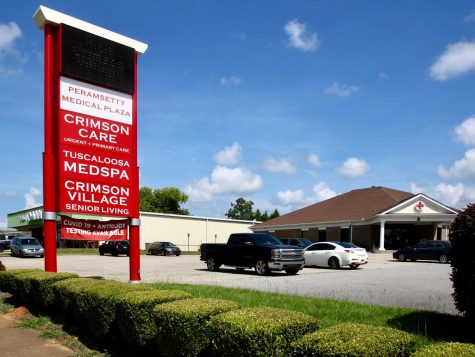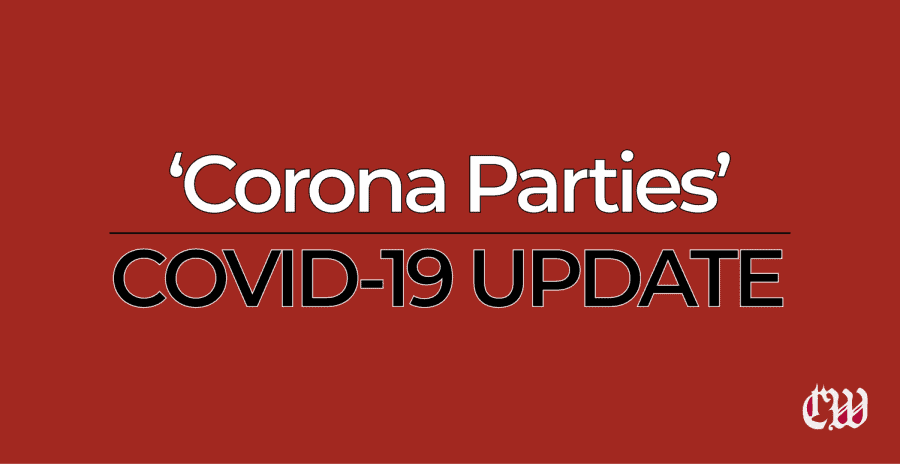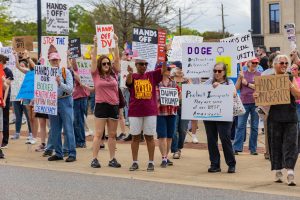Local doctor: University left key clinic out of “corona parties” investigation
July 3, 2020
While these rumors may have raised eyebrows, they’ve also raised concerns about the University’s preparedness for the fall.
After Tuscaloosa Fire Chief Randy Smith announced an investigation into “corona parties” at a pre-council meeting, rumors of these events quickly went national.
Smith claimed to have confirmed the existence of these parties with doctors and state officials without giving specific insight into what these investigations entailed. Council members claimed these parties were allegedly designed for students who had tested positive for the coronavirus to purposely gather and infect others. Some even said that money was offered to whoever contracted the deadly virus, which has already taken the lives of over 900 Alabamians.
“We had seen over the last few weeks parties going on in the county, or throughout the city and county in several locations where students or kids would come in with known positives,” Smith said on Tuesday, June 30. “We thought that was kind of a rumor at first….we did some additional research….not only did the doctor’s offices help confirm it but the state confirmed they also had the same information.”
According to Dr. Ramesh Peramsetty, a physician at Crimson Care in Tuscaloosa, these “intentional” infection parties have indeed occurred. Peramsetty claimed that staff at his clinic were shown videos of parties that were attended by UA students, and that money was involved, as some rumors suggested.
However, Peramsetty stressed that these events were happening in isolation and should not be generalized to an entire generation.
“There may be a few bad apples in any age group or population,” Peramsetty said. “This generation is our future and I trust in them. My responsibility as a physician is to educate, warn, and suggest the reality of this deadly virus during this pandemic.”
UA’s Response
Peramsetty noted that these parties could have been happening as early as June 6. But after being asked about these occurrences by a reporter, in a press conference held on June 15, UA President Stuart Bell chalked them up to rumors.
“I think everyone needs to take this virus seriously,” Bell said. “And I think [people] are making rumors of almost anything you could imagine someone would say. We look, certainly within our leadership, among our SGA, among our Greeks, and are communicating to them the importance of making sure that you make good decisions and smart decisions, and we will continue to do that as a University.”

Shane Dorrill of UA Strategic Communications delivered the University’s statement at 3:47 p.m. on July 2, noting that the University has known about the alleged parties and had not found any evidence that participants were UA students.
“We have been aware for weeks of the rumors about COVID parties,” The statement read. “We conducted a thorough investigation, and although we have been unable to identify any students who may have participated in these types of activities, we will continue to follow up on any information we receive and educate our students about essential precautions. Our students want a return to on-campus instruction and the extracurricular opportunities they enjoy, and we fully expect them to safeguard their personal health and safety and that of everyone at the university and in our city.”
Additionally, the UA Student Government Association released a statement just hours after the University’s.
“As cases continue to rise and more facts are released, we must remain both united and steadfast in our response against the spread of this dangerous, life-threatening virus,” the statement read. “We are fighting this virus together as a community, and we will continue to do so.”
The University did not provide a specific description of its investigation, but The Crimson White is actively seeking that information. Despite Crimson Care’s close proximity to campus, Peramsetty said he was never contacted by the University throughout its investigation about possible instances of these parties or any related cases. Peramsetty said his staff have informed the City of Tuscaloosa, but not the University directly.
‘An Important Lesson’
While there is no direct confirmation from any attendees that parties meant to deliberately infect people have occurred, the reopening of bars and lifting of social gathering restrictions have restored Tuscaloosa back to the college town it once was. Tuscaloosa began its early phases of reopening in late April, with advisory from DCH, when the county had about 200 positive cases. Since then, cases have increased nearly ten-fold.
Faulkner Williams, a junior marketing major at UA, denied the severity of any get-togethers in Tuscaloosa that he had witnessed.
“I’ve been on campus since spring break and haven’t heard of anyone going to or throwing ‘corona parties’,” Williams said. “Sure, there were small gatherings once bars and restaurants started opening back up, but no one is actively trying to get the virus or spread it.”
Williams believes that the rise in cases that followed the city’s reopening in early May was not the lone fault of students.
“My general consensus is that it’s very easy to blame students for a rise in cases when in reality, everything probably just opened back up too soon,” Williams said.
These reports, coupled by a rise in cases, come at a critical point in UA’s planning process. Garrett Bridger Gilmore, an English instructor and organizer for Safe Return UA, thinks that there is a bigger lesson to learn from this incident.
“Whether COVID parties really happened or not, this is an important lesson that we cannot only rely on individual choices to keep us safe when students return to campus,” Gilmore said. “Many of UA’s proposed policies rely on students who test positive to quarantine themselves, but they haven’t released details on who will be responsible for enforcing quarantining or how they will do it.”
On June 15, the University released a rudimentary plan for students to return to campus in the fall. The plan included quarantine measures for those who test positive while on campus and an optional contact tracking system for students, but even new additions to the plan have yet to provide details on enforcement.
“Without a public plan that accounts for how UA will implement universal testing and for what measures will be taken to ensure that students who are infected don’t carry on their lives like everything is normal, it’s hard for many university employees to believe that UA is taking COVID-19 as seriously as they say they are,” Gilmore said.
This is a developing story and will be updated with any new information. Opinions Editor Mikayla Wyatt contributed to the reporting of this story.








